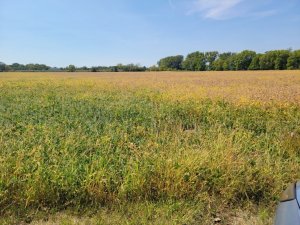Presented By: Museum of Anthropological Archaeology
The Upper Mississippian Transition of the Lower Great Lakes: A Case Study from the “Foot of the Rapids” of the Maumee River, Ohio
Laura Bossio, PhD candidate in Anthropology at the University of Michigan

The Late Woodland to Upper Mississippian cultural transition in the Lower Great Lakes has been acknowledged by archaeologists for decades, but the nature of the transition has remained poorly understood. Archaeologists have hypothesized that the stark cultural shift in the Western Lake Erie region, from the Late Woodland period to the “the Wolf phase,” could represent warfare and displacement of local Late Woodland peoples by Upper Mississippian aggressors, but this hypothesis has remained unsubstantiated by archaeological data. The other hypothesis suggested a local adaptation to a changing climate and sociopolitical environment.
The Maumee Archaeological Landscape Project (M.A.L.P.) adopts both a local and regional approach to address the cause of the cultural shift at ca. AD 1250 in the Maumee River valley. This dissertation research project presents new data from excavations at a ditch-enclosed village from the Williams #2 site (33-WO-7b) at Buttonwood property, along with new radiocarbon dates and ceramic analyses from local sites. New data suggests that defense likely was a major cause for the heightened sedentism seen throughout the river valleys of Western Lake Erie; however, the local displacement hypothesis is not supported. Rather, increasing regional hostility and tensions likely triggered migration into the river valleys of Western Lake Erie, co-habitation with communities connected through alliance, and ensuing ethnogenesis with local Late Woodland peoples.
The Maumee Archaeological Landscape Project (M.A.L.P.) adopts both a local and regional approach to address the cause of the cultural shift at ca. AD 1250 in the Maumee River valley. This dissertation research project presents new data from excavations at a ditch-enclosed village from the Williams #2 site (33-WO-7b) at Buttonwood property, along with new radiocarbon dates and ceramic analyses from local sites. New data suggests that defense likely was a major cause for the heightened sedentism seen throughout the river valleys of Western Lake Erie; however, the local displacement hypothesis is not supported. Rather, increasing regional hostility and tensions likely triggered migration into the river valleys of Western Lake Erie, co-habitation with communities connected through alliance, and ensuing ethnogenesis with local Late Woodland peoples.